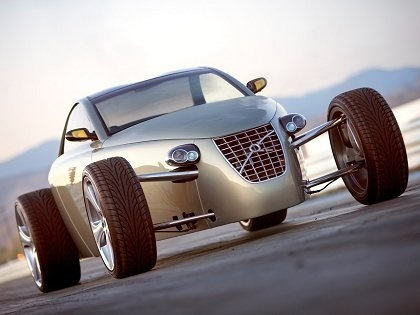2000 Audi Project Rosemeyer Concept
- Story Cars
.png/v1/fill/w_320,h_320/file.jpg)
- Aug 30, 2023
- 2 min read
The 2000 Audi Project Rosemeyer Concept stands as a remarkable creation by Audi, introduced initially at Autostadt and subsequently showcased at prominent auto shows across Europe in 2000. While never intended for production, this concept car captivated attention with its distinctive design and strong sporting character, leaving a lasting impact on enthusiasts and admirers.
The concept was meticulously crafted to evoke emotion and capture the spotlight, effectively blending contemporary design elements with a clear homage to the legendary "Silver Arrows" Grand Prix racers of Auto Union. Specifically named after Bernd Rosemeyer, who famously piloted the 16-cylinder Auto Union race car, the Rosemeyer concept pays homage to that era. Additionally, the design resonates with the spirit of the "Type 52" study from the 1930s, conceived by Dr. Ferdinand Porsche and Dr. Erwin Komenda, which envisioned a road-going version of the Silver Arrows, a concept that never materialized.
Positioned as a high-performance powerhouse, the Rosemeyer concept is propelled by a robust mid-mounted W16 engine, boasting a sizable displacement of 8,004 cubic centimeters. This engine generates a remarkable 700 hp (522 kW; 710 PS) and a torque of 760 N⋅m (561 lbf⋅ft) at 9,000 rpm, promising extraordinary performance to match its visually striking aesthetics. The integration of Audi's quattro permanent four-wheel-drive system further underscores its prowess on the road.
Anticipating a projected top speed of 350 km/h (217.5 mph), the Rosemeyer concept aimed to deliver exceptional velocity and dynamism, even though the car's functionality prevented actual on-road testing. Regrettably, despite the widespread anticipation and admiration, the Rosemeyer never progressed to production. Audi's decision was driven by a combination of factors, including the substantial projected production costs and the brand's consideration of Lamborghini, which they had acquired in the 1990s, as a rival.
Although the Rosemeyer concept didn't evolve into a production vehicle, its influence persisted within Audi's lineage. The subsequent development of the Audi R8, deriving from the Le Mans quattro concept, shared a connection to the Rosemeyer's legacy. Furthermore, design cues and the W16 engine from the Rosemeyer were integrated into the Bugatti Veyron, marking another chapter in the concept car's ongoing impact on the automotive landscape.
Images: AUDI AG.
Sources: Gerber Motorsport; Segura Inc; Gawker Media






































Comments